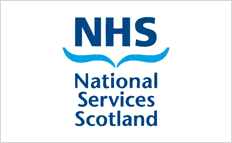Blood lead occupational monitoring
-
STEMDRL is funded to provide an analytical and interpretative service for trace elements and vitamins to the NHS in Scotland. Non-NHS requests, for example occupational monitoring of individuals working with toxic trace elements (including lead), are not funded and the laboratory is obliged to charge the requesting clinician in these cases. Occupational monitoring samples should be sent directly to STEMDRL and the request form below should be sent with samples to ensure that they are charged for appropriately:
- Please note that a clinician appointed by the Health and Safety Executive should carry out routine monitoring of workers at high risk of lead exposure. A list can be found on this page on the HSE website (see 'Related Content' section). Employers should arrange blood lead monitoring for their employees at high risk of lead exposure. Where individuals are self employed, it is their responsibility to arrange blood lead monitoring through a clinician appointed by the Health and Safety Executive.
Below is a summary of the parts of the Control of Lead at Work Regulations 2002, UK as they apply to biological monitoring. A full copy of the regulations is available online. Individuals who are working with lead should read this document from the Health and Safety Executive.
- The limit for blood lead is 60 µg/100 ml (2.90 µmol/l). Workers with blood lead levels above this will need a repeat test done. If a level above the limit is confirmed, the employment medical adviser will normally temporarily suspend the employee from that work
- The regulations stipulate an action limit of 50 µg/100 ml (2.41 µmol/l) above which the employer must act to try to reduce lead exposure.
- For women capable of bearing children and for young employees under 18 there are lower limits
| Category | Action Level | Suspension level |
|---|---|---|
| General | 50 µg/100 ml (2.41 µmol/l) | 60 µg/100 ml (2.90 µmol/l) |
| Women capable of having children | 25 µg/100 ml (1.21 µmol/l) | 30 µg/100 ml (1.45 µmol/l) |
| Young people under 18 | 40 µg/100 ml (1.93 µmol/l) | 50 µg/100 ml (2.41 µmol/l) |
- For on-line conversion of blood lead values from one set of units to another, click here.
-
For exposure to lead alkyls, urine lead analysis is required. This test is not currently available at STEMDRL.

